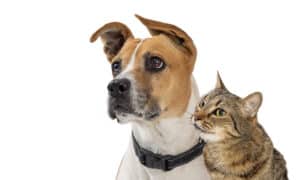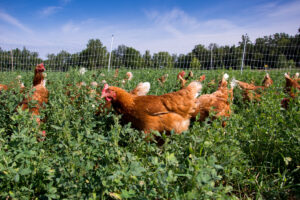Learning about space is one of a child’s most intriguing experiences. They consider the solar system a place of eternal mystery, and consequently, stars, planets, and astronauts fascinate them. This may result in a flurry of inquiries that require brief, straightforward answers to pique their interest. “Mom, is the sun a star or a planet?” “Why is the moon following me, Dad?”
Perhaps these questions remind you of your nerdy younger self, and you can’t help but notice their giddy enthusiasm for the night sky and its mysteries.
Although children aren’t the only ones fascinated by the sun, moon, brilliant stars, and the Milky Way, a wide range of age-appropriate books are dedicated to teaching, engaging, and entertaining children about the marvels of space.
Whether your kid dreams of being an astronaut or is simply in love with historical fiction, we’ve compiled books to match the energy of every child. So please read on as we take you through some of the best books about space you can buy for kids.
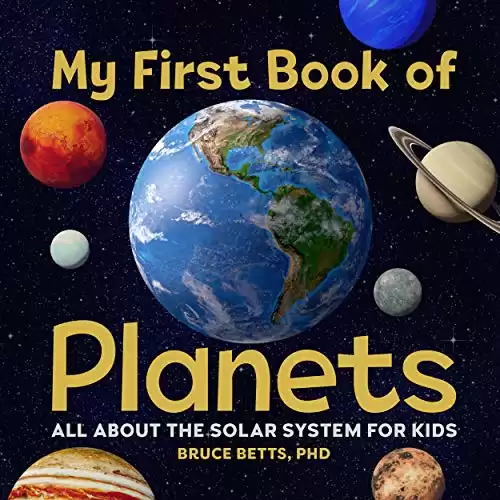 Check Amazon
Check Amazon- 68 pages.
- Customers recommend this book for children ages 6 through 8.
- Part of the My First Book Of series.
- Interesting facts that captivate preschoolers.
- A great resource to teach kids about the planets.
 Check Amazon
Check Amazon- 48 pages.
- Customers recommend this book for children ages 3 through 6.
- Part of Cat in the Hat's Learning Library.
- Uses rhymes to reinforce learning.
 Check Amazon
Check Amazon- 40 pages.
- Recommended for children ages 4 through 8.
- Beautifully illustrated and inspiring children's book.
- Portrays the importance of problem-solving skills and self-confidence.
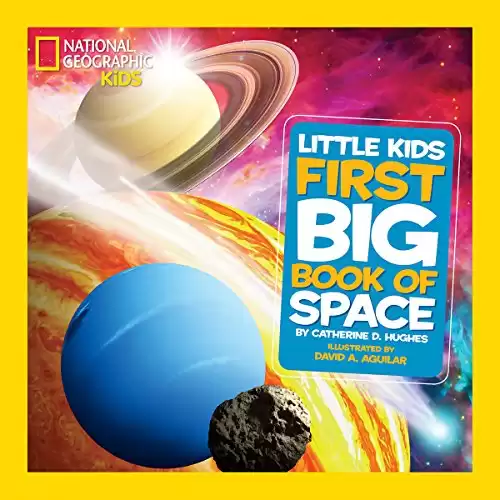 Check Amazon
Check Amazon- 128 pages.
- Customers recommend this book for children ages 3 through 6.
- Contains up-to-date information about space.
- Maintains a balance between a straightforward approach and providing technical knowledge.
- Oversized and vibrant illustrations.
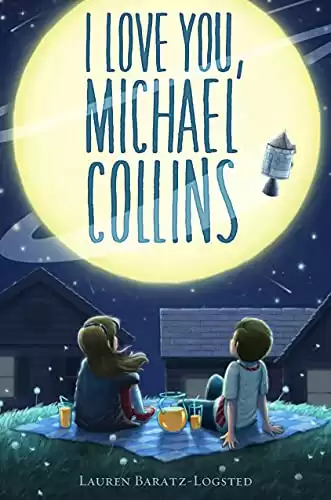 Check Amazon
Check Amazon- 240 pages.
- Perfect for pre-teens.
- A fantastic historical novel based on actual events.
- Has positive themes, such as responsibility and resilience.
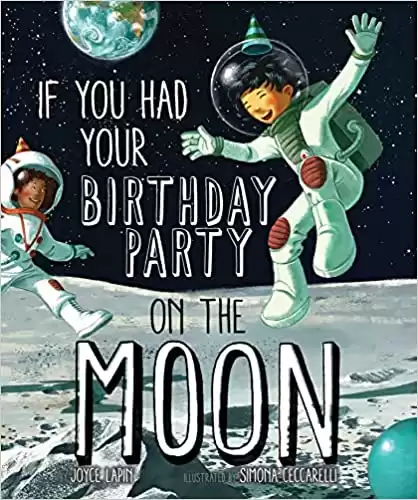 Check Amazon
Check Amazon- 40 pages.
- Recommended for children ages 7 and older.
- 2nd- and 3rd-grade reading level.
- Entertaining and informative.
 Check Amazon
Check Amazon- 40 pages.
- Customers recommend this book for children ages 6 through 10.
- Inspires kids who love STEM.
- Excellent use of vocabulary.
- Compelling storyline.
A-Z-Animals’ Top Picks for the Best Children’s Books About Space
1. My First Book of Planets: All About the Solar System for Kids by Bruce Betts PhD
If you want to pique a child’s interest in space My First Book of Planets: All About the Solar System for Kids by Bruce Betts PhD is the introduction to science and astronomy you’ve been looking for.
My First Book of Planets is one of eight books in the My First Book Of series for youngsters. Planetary scientist and science communicator Bruce Betts wrote this entry. The book, created for youngsters aged three to five, presents a current summary of the planets in our solar system.
Thanks to its exciting facts, this book will transport kids to every planet and deep space, without the need for a telescope! Everything there is to know about the planets that make up our solar system will be right at their fingertips. Unfortunately, however, the images don’t fully live up to those expectations.
The book contains 68 pages, so reading can be spaced out over a few days to pique your early reader’s attention. It’s accessible in spiral-bound, Kindle, hardback, and paperback formats.
Pros and Cons of My First Book of Planets: All About the Solar System for Kids by Bruce Betts PhD
| Pros | Cons |
|---|---|
| This book is the first of eight in the My First Book Of series for kids ages three to five. | The images aren’t as stellar as the verbiage. |
| Planetary scientist and science communicator Bruce Betts authored this book, which presents a summary of the planets in our solar system. | |
| It can transport your child to each planet and into deep space without a telescope. | |
| This title is 68 pages long and is available in spiral-bound, Kindle, hardback, and paperback formats. |
- 68 pages.
- Customers recommend this book for children ages 6 through 8.
- Part of the My First Book Of series.
- Interesting facts that captivate preschoolers.
- A great resource to teach kids about the planets.
2. There’s No Place Like Space by Tish Rabe (Author), Aristides Ruiz (Illustrator)
Since its publication in 1999 as part of the 50 books in the Cat in the Hat Learning Library, There’s No Place Like Space has remained a go-to for five to eight-year-olds to learn about the solar system.
It features well-known characters from Dr. Seuss’s The Cat in the Hat, rich visuals, and fun rhymes. Tish Rabe, a bestselling children’s book author, wrote it, and Aristides Ruiz illustrated it.
There’s No Place Like Space is an enjoyable, beautifully illustrated book that helps kids discover the marvels of space while learning about the solar system, planets, constellations, and astronauts. The 48-page book is available in hardcover and Kindle editions and makes for a quick and enjoyable read.
Several reviewers said that that the rhyming in this book was not on par with the original The Cat in the Hat by Dr. Seuss. They also reported that Pluto was not included.
Pros and Cons of There’s No Place Like Space by Tish Rabe (Author), Aristides Ruiz (Illustrator)
| Pros | Cons |
|---|---|
| Originally published in 1999, this title has remained a go-to for kids ages five through eight to learn about the solar system. | Several reviewers said that that the rhyming in this book was not on par with the original The Cat in the Hat by Dr. Seuss. |
| It features characters from Dr. Seuss’s The Cat in the Hat, rich visuals, and fun rhymes. | They also reported that Pluto was not included. |
| It was written by bestselling children’s book author and illustrated by Aristides Ruiz. | |
| This book helps kids discover the wonders of space while learning about our solar system, planets, constellations, and astronauts. | |
| This 48-page book is available in hardcover and Kindle editions. |
- 48 pages.
- Customers recommend this book for children ages 3 through 6.
- Part of Cat in the Hat's Learning Library.
- Uses rhymes to reinforce learning.
3. Margaret and the Moon: How Margaret Hamilton Saved the First Lunar Landing by Dean Robbins (Author) and Lucy Knisley (Illustrator)
Margaret and the Moon: How Margaret Hamilton Saved the First Lunar Landing by Dean Robbins (author) and Lucy Knisley (illustrator) is based on the biography of Margaret Hamilton, one of the pioneers in her field. She hand-wrote code crucial to many missions, including the launch of Apollo 8, 9, 10, and 11. She joined NASA in 1964 and rose through the ranks to become the director of software programming for Project Apollo. As the projected landing approached, issues arose with Apollo 11’s Eagle lunar module, bringing the story to a dramatic climax. Hamilton’s code addressed the fault, and the module landed successfully in the face of a potentially catastrophic computer overload.
The plot establishes Margaret’s path early on by highlighting her love of science, math, and big questions. Margaret and the Moon demonstrates her significance in a male-dominated industry and how her extraordinary arithmetic abilities facilitated the development of the space program.
The cartoon-style illustrations, created by award-winning writer Dean Robbins and illustrator Lucy Knisley, lend humor to this book. This makes Hamilton’s onerous responsibilities clear and appealing to a younger audience.
This book has been featured on many honorable lists, including A Mighty Girl, The Planetary Society, Children’s Book Council, Illinois Reads Selection, and Kids’ Indie Next List, among others.
A couple of reviewers weren’t impressed by the way the book handled sexism, with one saying, “Bought to share with a class of four to five year olds. Appreciate the sentiment, glad there is a book out there that celebrates a woman’s achievements in a scientific field. However I didn’t find it particularly well written. As a feminist woman, even I found the whole ‘sexist attitudes of men of the time’ angle to be over-egged.”
Pros and Cons of Margaret and the Moon: How Margaret Hamilton Saved the First Lunar Landing by Dean Robbins (Author) and Lucy Knisley (Illustrator)
| Pros | Cons |
|---|---|
| This book is based on the biography of Margaret Hamilton, who joined NASA in 1964 and rose through the ranks to become the director of software programming for Project Apollo. | A couple of reviewers felt like the book essentially parodied sexism. |
| Hamilton hand-wrote code for many of the missions, including Apollo 8, 9, 10, and 11. | |
| When issues arose with Apollo 11’s Eagle lunar module prior to its landing, Hamilton’s code addressed the fault, and the module landed successfully in the face of a potentially catastrophic computer overload. | |
| The book emphasizes Hamilton’s love of science, math, and big questions and demonstrates her significance in a male-dominated industry and how her extraordinary math ability facilitated the development of America’s space program. | |
| The writing and illustration styles lend humor to this book. | |
| It has been featured on many honorable lists, including A Mighty Girl, The Planetary Society, Children’s Book Council, Illinois Reads Selection, and Kids’ Indie Next List. |
- 40 pages.
- Recommended for children ages 4 through 8.
- Beautifully illustrated and inspiring children's book.
- Portrays the importance of problem-solving skills and self-confidence.
4. National Geographic Little Kids First Big Book of Space by Catherine D. Hughes
Published by National Geographic Kids as part of a 21-book series, National Geographic Little Kids First Big Book of Space offers a rudimentary explanation of space concepts, starting with the details of the universe that are most familiar to children. You will find images such as the Earth, other planets, comets, the Milky Way, black holes, and much more.
Catherine Hughes collaborated with illustrator David Aguilar to create this aesthetically engaging first reference book for children aged four to eight. It’s a lengthy book that young people should take their time reading. Both Kindle and hardback editions are available.
Several reviewers reported that there were issues with the binding that caused pages to fall out. Another said that this book is appropriate only for very young children.
Pros and Cons of National Geographic Little Kids First Big Book of Space by Catherine D. Hughes
| Pros | Cons |
|---|---|
| This National Geographic Kids title is part of a 21-book series. | There may be issues with the binding that allow pages to fall out. |
| It offers basic explanation of space concepts, beginning with details of the universe that are most familiar to children. | It may be appropriate only for very small children. |
| Some of the images include the Earth, other planets, comets, the Milky Way, and black holes. | |
| This aesthetically engaging first reference book for kids four to eight was written by Catherine Hughes and illustrated by David Aguilar. |
- 128 pages.
- Customers recommend this book for children ages 3 through 6.
- Contains up-to-date information about space.
- Maintains a balance between a straightforward approach and providing technical knowledge.
- Oversized and vibrant illustrations.
5. I Love You, Michael Collins by Lauren Baratz-Logsted
Lauren Baratz-Logsted’s critically acclaimed middle school historical fiction novel I Love You, Michael Collins chronicles the narrative of Mamie Anderson, a 10-year-old girl. She writes a message to her favorite astronaut, Michael Collins, who is on his way to the moon but must stay on the spacecraft the entire time.
Although Michael Collins was not the most notable figure in the events surrounding the moon landing in 1969, the story revolves around his contribution to one of the most exciting moments in American history.
I Love You, Michael Collins made it to several renowned lists, including Maine Student Book Award Reading List (2018-19), Children’s Book Council Notable Social Studies Trade Books for Young People (2018), Amazon Editors’ Pick Best Books (2017), National Science and Engineering Council of Canada for Science Literacy Week (2018), and many others.
Despite being a 240-page read, the plot is fascinating enough that it won’t take long to finish. You can get it in paperback, hardcover, Kindle, and audiobook.
The only negative review said, “If you get this story, do the written formats, not the audiobook, if possible. The audiobook is painfully slow and boring to listen to; both my kids and I couldn’t handle more than a few minutes before turning it off. It’s too bad Amazon doesn’t allow you to do a return for an audiobook.”
Pros and Cons of I Love You, Michael Collins by Lauren Baratz-Logsted
| Pros | Cons |
|---|---|
| This middle-school historical fiction novel chronicles the narrative of Mamie Anderson, a 10-year-old girl, who writes a message to her favorite astronaut, Michael Collins. | The only negative review said, “If you get this story, do the written formats, not the audiobook, if possible. The audiobook is painfully slow and boring to listen to; both my kids and I couldn’t handle more than a few minutes before turning it off. It’s too bad Amazon doesn’t allow you to do a return for an audiobook.” |
| Collins is part of the 1969 Apollo moon landing, but must stay inside the spacecraft the entire time. | |
| This book revolves around his contribution to this pivotal moment in history. | |
| This book has been featured in many renowned lists, including the Maine Student Book Award Reading List (2018-19), Children’s Book Council Notable Social Studies Trade Books for Young People (2018), Amazon Editors’ Pick Best Books (2017), National Science and Engineering Council of Canada for Science Literacy Week (2018). | |
| This 240-page book is available in the following formats: paperback, hardcover, Kindle, and audiobook. |
- 240 pages.
- Perfect for pre-teens.
- A fantastic historical novel based on actual events.
- Has positive themes, such as responsibility and resilience.
6. If You Had Your Birthday Party on the Moon by Joyce Lapin (Author), Simona Ceccarelli (Illustrator)
In her debut picture book, If You Had Your Birthday Party on the Moon, Joyce Lapin plays with the idea of having a birthday celebration on the moon’s surface. The guests at the birthday party, including a dog, land on the moon after taking a dazzling orange rocket. The partygoers are decked out in space suits and party hats as they marvel at the vista of Earth.
The Simona Ceccarelli’s illustrations are authentic in their depiction of the moon landscape. Further, with its sidebars and glossary, this book is suitable for kids from three to eight. It presents a fun, quick way to learn about the moon and galaxy in 40 pages. It’s available in hardcover and Kindle formats.
Bonus point: Don’t be surprised if a kid wants to have a space-themed birthday party after reading this!
Pros and Cons of If You Had Your Birthday Party on the Moon by Joyce Lapin (Author), Simona Ceccarelli (Illustrator)
| Pros | Cons |
|---|---|
| This picture book plays with the idea of having a birthday party on the moon. | None |
| The illustrations authentically depict the moon’s landscape. | |
| It features sidebars and a glossary, which make this book suitable for kids from three to eight. | |
| It’s a fun way to learn about the moon and galaxy in 40 pages. | |
| This book is available in hardcover and Kindle formats. |
- 40 pages.
- Recommended for children ages 7 and older.
- 2nd- and 3rd-grade reading level.
- Entertaining and informative.
7. Hidden Figures: The True Story of Four Black Women and the Space Race by Margot Lee Shetterly (Author), Laura Freeman (Illustrator)
Hidden Figures: The True Story of Four Black Women and the Space Race tells the tale of four African American mathematicians, Dorothy Vaughan, Mary Jackson, Katherine Johnson, and Christine Darden, who worked at NASA in the 1960s.
It’s a simplified version, aimed at children between the ages of four and eight, of the New York Times bestselling book and the Academy Award-nominated film of the same title. The women overcame obstacles to support the astronauts of the day in their mission to the moon.
Authored by Margot Lee Shetterly and illustrated by Laura Freeman, Hidden Figures can be a valuable springboard for discussions on fairness, diversity, and inclusion with young readers.
It’s a light read perfect for six- to 10-year-olds, and it’s available in paperback, hardcover, and Kindle.
Laura Freeman received the NAACP Image Award for Outstanding Literary Work for Children for her work on Margot Lee Shetterly’s “Hidden Figures.” It also became a New York Times Best Seller and was named one of “Ten Books All Georgians Should Read.”
A couple of reviewers said that they wished that the book included more details. Also, two readers said that it was “impossible to read” on their Kindle.
Pros and Cons of Hidden Figures: The True Story of Four Black Women and the Space Race by Margot Lee Shetterly (Author), Laura Freeman (Illustrator)
| Pros | Cons |
|---|---|
| This historical novel tells the tale of four African American mathematicians, Dorothy Vaughan, Mary Jackson, Katherine Johnson, and Christine Darden, who worked at NASA in the 1960s. | A couple of reviewers said that they wished that the book included more details. |
| It’s written for kids ages four to eight. | Also, two readers said that it was “impossible to read” on their Kindle. |
| It focuses on the obstacles the women underwent to support the astronauts on their mission to the moon and can be a valuable springboard for discussions on fairness, diversity, and inclusion with young readers. | |
| It’s ideal for six- to 10-year-olds, and it’s available in paperback, hardcover, and Kindle. | |
| Laura Freeman received the NAACP Image Award for Outstanding Literary Work for Children for her work on Margot Lee Shetterly’s “Hidden Figures.” It also became a New York Times Best Seller and was named one of “Ten Books All Georgians Should Read.” |
- 40 pages.
- Customers recommend this book for children ages 6 through 10.
- Inspires kids who love STEM.
- Excellent use of vocabulary.
- Compelling storyline.
Criteria: What to Look for in Children’s Books About Space
When you’re shopping for a children’s book about space, it’s helpful to keep the following criterion in mind: the child’s age and their interests. Let’s look at how these factors play into selecting the perfect gift.
The Child’s Age
Our review includes books that are suitable for many different age groups. Of course, not every child reads at the same level. Some six-year-olds, for example, may read at a preschool level or even a level or two above.
The Child’s Interests
Is the child interested in a specific aspect of space, such as the moon or the solar system? Do they enjoy picture books, biographies, or historical fiction? The books in this review include something for every taste, including books about the solar system, historical fiction about key players in America’s space program, a National Geographic Little Kids overview of space, and an entertaining-yet-educational imagining of having a birthday party on the moon.
Thank you for reading! Have some feedback for us? Contact the AZ Animals editorial team.


